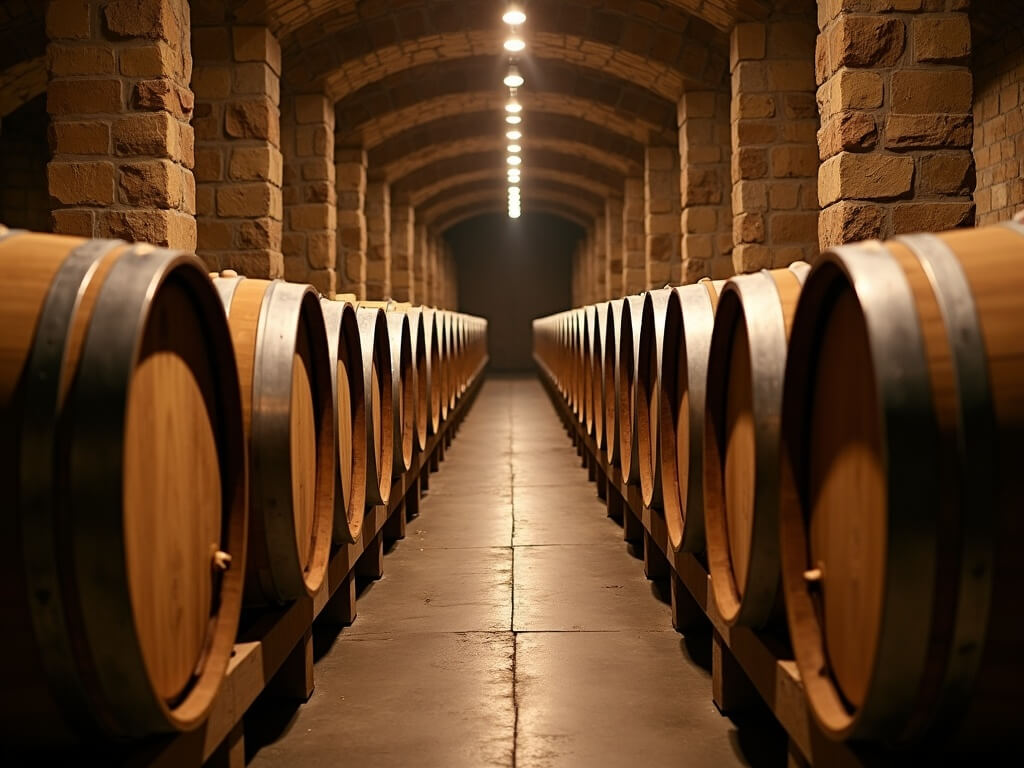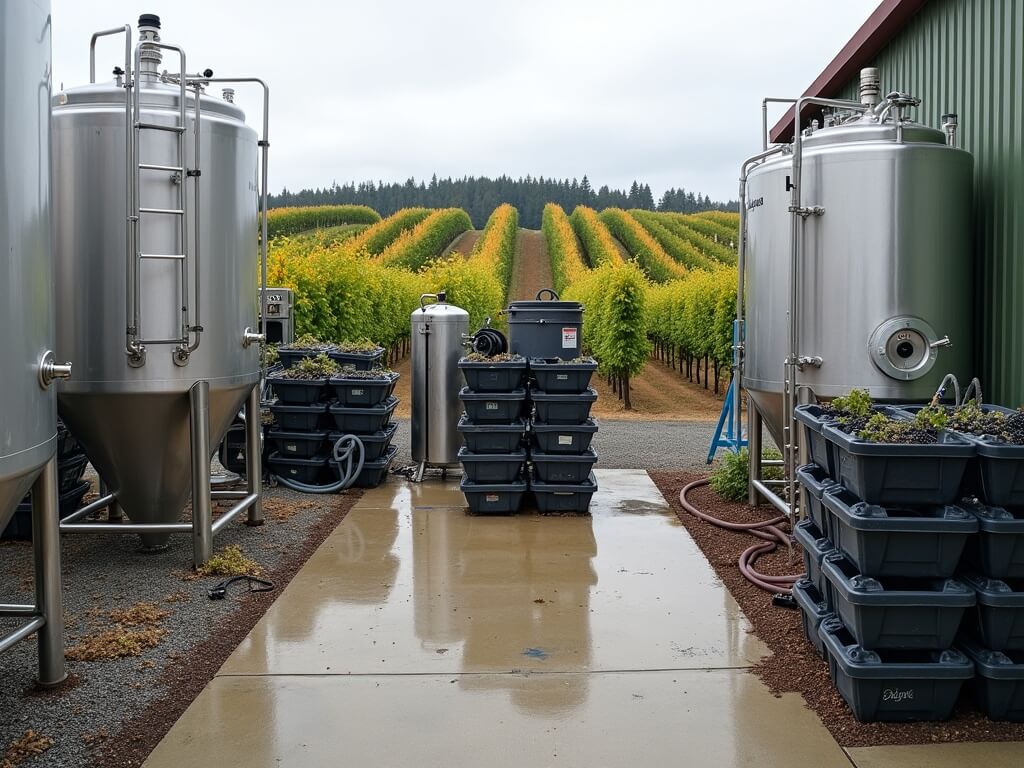If you're running a winery and thinking, "How do I actually keep track of all this wine, gear, land improvements, and taxes without losing my grip on what’s profitable?" — you're asking the right questions.
Winery accounting services aren’t just back-office busywork. They’re how you uncover hidden costs, maintain compliance with changing regulations, and protect your margins across bad harvests and great years.
About 80% of wine industry financial roadblocks come from three categories:
- Improper cost tracking (especially for production and aging inventory)
- Tax headaches from misunderstood vineyard depreciation rules
- A disconnect between operational systems and financial reporting
Here’s what you really need to know—and why most generic CPAs miss the point.

Why Winery Accounting Is Wildly Different From Regular Bookkeeping
At the crossroads of agriculture, alcohol, and hospitality, winery accounting is like playing four games of chess at once. You’re growing crops and aging inventory for years while simultaneously running a retail, wholesale, and sometimes hospitality business.
Your accounting should integrate all these layers.
What makes wine accounting feel like its own language:
- You deal with long production cycles (what you harvested this year might not generate revenue until two or three years later).
- Certain costs (like barrel aging or cellar storage) don’t show up on your income statement for months—because they’re capitalized as inventory.
- Federal and state laws (looking at you, TTB) have overlapping rules for reporting, inventory audits, and excise taxes.
It’s why we recommend working with people who live and breathe winery books—not generalists.
Budgeting & Forecasting So You Don’t Run Dry Mid-Harvest
Wineries experience seasonal income swings. Tasting room revenue spikes in summer. Grape costs hit all at once during harvest. Bottling season brings another wave of expenses.
Your budget should reflect reality—not hope.
Helpful forecasting tips:
- Build your cash flow calendar around production and harvest cycles.
- Include capital investments early (like new vines or tanks).
- Run sensitivity analysis: What happens if you sell 30% less of your reserve cabernet?
I remember helping a mid-size winery in Washington restructure their cash flow strategy after years of stress every July. Their fix? A rolling 18-month forecast with monthly recalibrations based on wholesale sales. It sounds small—saved them six figures in emergency short-term financing.

The Core Statements That Actually Tell You What’s Going On
Your P&L should break out key profit centers: tasting room, wine club, wholesale, and DTC ecommerce.
Same with your balance sheet—vineyard improvements should be tracked separately from building value or equipment. You want to know not just what you own, but how long it’ll keep generating value.
Behind those reports?
- Chart of accounts tailored to vineyard and production operations
- Classification of current vs non-current inventory (more on that soon)
- Linked asset schedules that update depreciation annually
Wine Costing Is Where Profits Go to Live or Die
If you’re not sure how much it truly costs to bring a bottle to market, you’re throwing darts in the dark.
Wine costing includes:
- Direct materials (grapes, bottles, corks)
- Direct labor (crush, cellaring, filtering)
- Indirect costs (barrel amortization and utilities)
- Overhead (facility rent, insurance, compliance costs)
You need a system that distributes these costs accurately across each stage:
- Work-in-progress
- Barrel aging
- Finished goods in bottle
Poor margin tracking means you may be underpricing your best-selling label, or overbudgeting components you don’t even realize are stale.
Specific identification (especially for reserve batches) helps you fix that.
Inventory Valuation: Accounting for Wine the IRS Way
Most businesses track basic physical goods that don’t change much over time. You sell widgets. Widget leaves shelf. Revenue happens.
In wine? A 2019 red blend aged in oak barrels for 36 months is carrying aging cost, insurance, storage, and evaporative loss every month until it’s bottled.
That wine isn’t inventory. It’s a time capsule full of cost.
So how should aging inventory be valued over time?
Under IRS rules—specifically the UNICAP rules—you’re required to capitalize both direct and indirect costs in wine production until the product is ready to sell. That means:
- Containers (barrels, tanks, bottles)
- Storage rent or depreciation on your wine cave
- Overhead allocation (yes, even the cost of lease accounting software if tied to production)
Choosing the right method matters:
- FIFO often understates costs for long-aging vintages
- Weighted average might work for volume sellers
- But specific identification is the gold standard for anything reserve, vintage-specific, or audited by federal wine agencies
One Napa Valley winery we worked with faced a five-figure penalty from an IRS audit after using FIFO across all SKUs—even their 5-year vertical pinots. We rebuilt their cost accounting with specific ID and margin performance jumped 18% over the next vintage cycle.
The Key Takeaway for All Inventory:
Allocate all production and aging costs accurately—because these impact both your tax liability and profitability signals.
Compliance: The Stuff that Keeps You Out of Trouble
Federal law requires you to report:
- Monthly inventory movements (via the TTB)
- Excise taxes based on bottling events, not just sales
- State-level sales tax for any tastings, events, and local shipments
Having an untracked barrel that “evaporated” or was gifted away can throw your TTB report off just enough to spark an audit.
Best defense?
- Tie inventory and costing systems to your accounting platform
- Automate TTB-ready data exports
- Document spoilage and shrinkage promptly (you’d be surprised how often angel’s share is misused as a blanket explanation)
Looking to Grow? Then So Are Your Financing Needs
Wineries hitting capacity—or looking to expand tasting room offerings—usually need outside capital.
What banks (and investors) want to see:
- Multi-year financials with consistent accrual accounting
- Depreciation schedules tied to physical fixed asset inventory (no ghost assets)
- COGS breakdowns for each SKU class
That last one? It’s how one Oregon winery secured a $1.8 million equipment line. Their previous CPA gave them lump-sum reporting. When we stepped in, we rebuilt detailed batch costing and age tracking—and the bank considered them a lower-risk borrower.
Succession Planning Isn’t Optional. It’s Just Early or Late.
Especially in family-run wineries, estate planning isn’t about taxes. It’s about a seamless ownership transition across generations.
It’s hard to hand off a legacy when:
- You haven’t documented vineyard improvements properly
- Inventory is misvalued or overstated
- The books are “close enough” but no one actually understands the logic under the numbers
You don’t want the next generation inheriting a tax mess—or learning about recapture rules during a sale negotiation.
Want a smoother handoff?
- Get your asset schedules and cost basis nailed down now
- Track capital contributions over time if co-owners grow the operation
- Start planning 5+ years before you need to transfer ownership
Quick Recap Before We Go Deeper:
- Winery accounting services go well beyond receipts and spreadsheets. They’re strategy tools.
- Your wine inventory is a living asset—it ages, gains cost, and requires specialized valuation methods.
- Depreciation and cost tracking impact more than your books: they affect loans, taxes, and your eventual exit.
Let’s get deeper into those asset depreciation rules next…
For related services, explore our bookkeeping services for breweries or more comprehensive bookkeeping solutions.
When Your Assets Start Aging (But Your Accounting Can’t)
Grapevines, by IRS rules, are depreciated over 10 years under MACRS. But let’s be real—vines can yield fruit for decades.
So how do you handle that on your books without creating valuation chaos?
Here’s how I approach fixed asset management for vineyards and wineries:
Start by breaking assets into realistic, IRS-compliant categories:
- Land? Not depreciated—but track any grading, utility installations, fencing, etc. as land improvements.
- Vines? Once they start bearing fruit, classify them as 10-year property.
- Equipment? Most vineyard or cellar gear is 5- or 7-year MACRS. Bonus depreciation? Still at 80% in 2023, dropping 20% annually.
And improvements? Don’t expense those wine cave renovations—it’s not just for aesthetics. Capitalize and depreciate as structural improvements.
Just last spring, I worked with a winery in Santa Barbara that had $300K in irrigation upgrades buried as “repairs” in OpEx.
We reclassified them as depreciable land improvements with a 15-year life.

Result? They unlocked legitimate tax deductions (accelerated under MACRS), cleaned up asset schedules, and finally aligned their books with their long-term capex strategy.
The Lesson? Proper classification = better depreciation = smarter tax planning = cleaner financials.
Explore more on Fixed Asset Accounting for Wineries: Land, Buildings, and Equipment.
What Happens When You Sell? (Hint: It’s Not Over Yet)
Let’s say you're selling your family vineyard or merging with a larger outfit.
Your fixed assets come up fast—especially if you’ve taken accelerated depreciation.
And here’s the kicker: When you sell, the IRS wants to “recapture” that deduction.
That means that portion gets taxed at ordinary income rates.
A $150K tractor you depreciated fully, now sold for $50K? That $50K isn’t capital gain—it’s recapture income.
Now, you can defer that hit using a Section 1031 exchange—but only for real property like land or buildings.
The takeaway:
- Keep detailed asset schedules with acquisition dates, cost basis, and depreciation to date.
- Think ahead before a sale or succession. Get those numbers clean before a letter of intent hits your lawyer’s inbox.
Learn more at Fixed Asset Tax Opportunities and Depreciation Strategies for Wineries.
Don’t Let Inventory Sink Your Books
Aging wine is not just a luxury—it’s a balance sheet black box if you’re not careful.
Why? Because work-in-progress sitting for 12, 24, even 60 months builds up capitalized costs—and if you don’t track every dollar into that barrel, you’ll never price your wine appropriately or report it accurately.
For tax purposes, all of this falls under UNICAP rules:
- Direct labor (harvest, crush, fermentation)
- Indirect costs (quality control, cellar utilities, insurance)
- Overhead (facility depreciation, salary allocations tied to production)
…must be capitalized as part of inventory until the wine is bottled and ready for sale.

And no, a loose “blended” cost isn’t good enough for audits or grant applications.
Break it down:
- Raw grapes become work-in-process in fermenters.
- They move into barrel (more costs added).
- Finally, they’re bottled and stored (even more costs added).
We had a Napa client building a library of vintage cabernets for collector releases.
Problem? They used FIFO—across all vintages.
When we converted them to specific identification tied to each batch and barrel, they discovered two mishandled SKUs were dragging down margins by 12%.
Fixing it helped not just profitability—but their valuation with potential investors.
Your Inventory Isn’t Just Wine. It’s Data.
Make sure your ERP or accounting platform (we recommend options that integrate seamlessly with vineyard CRMs or cellar tracking tools) can:
- Capture batch-level cost data
- Allocate overhead based on work orders or cellar hours
- Reconcile physical counts with cycle counts quarterly
- Flag aging, shrinkage, or write-offs early
Your balance sheet reflects your winery’s health.
Old barrels, outdated labels, and expired chemicals all belong in the write-off column—not lingering as “assets” bloating the books.
Shrinkage Isn’t Just a Cellar Problem—It’s an Audit Trigger
Wine losses happen.
Evaporation. Spoilage. Breakage. Theft. Offsite event “donations” that never made it back.
TTB expects you to track those by lot and explain variances.
So yes, that missing Syrah barrel can absolutely tank your compliance if not logged properly.
Best practices we implement:
- Monthly cycle counts integrated into barrel management software
- Spoilage logs tied to QA testing (yes, even for brett infections)
- TTB export reports that reconcile to your GL and bottling schedules
- Documentation for every bottle dumped or donated
One of our advisors caught $40K of overstated inventory in a winery’s books—stuff marked as “aging” that had long since turned to vinegar and been quietly hauled away.
Avoiding that isn’t just good compliance—it’s accurate valuation (and lower taxes).
Want Financing? Get Your Wine Whispering to Banks
Lenders love wineries with:
- Consistent inventory valuation tied to cost
- Fixed asset schedules that match the insurance ledger
- A breakdown of revenue by SKU channel (tasting room, club, DTC, wholesale)
One of our clients in Oregon secured $1.8M in expansion capital because their new asset-led balance sheet made their case airtight.
They didn’t need more wine—they needed cleaner data.
And remember: Understatements or vague assumptions don’t help you if an underwriter calls for a forensic audit.
If You’re Not Planning Your Exit, You’re Already Behind
Estate planning isn’t just when retirement's around the corner.
For winery owners, succession must account for:
- Capital contributions from family members or outside investors
- Retained earnings vs. owner draws
- Accurate inventory and asset values (trust us, no one wants to inherit a tank with “unknown” depreciation status)
Plus—any depreciation you’ve used aggressively? The IRS will try to recapture on transfer or sale.
So your action plan?
- Audit-proof depreciation schedules organized by asset category
- Document ownership %s and contributions
- Implement buy-sell agreements early, before tensions arise
We worked with a three-generation winery group in Walla Walla where the founder's kids inherited confusing ledgers and mismatched cost tracking.
It took 18 months to untangle.
But after rebuilding their books, not only did their estate tax liability drop 22%—they also attracted a private equity investor for their DTC brand.
Final Word: Wine Accounting Isn’t a Chore—It’s a Cask of Strategy
Look, the wine industry isn’t just hard because the weather’s unpredictable.
It’s hard because without solid accounting, your best year can still leave you cash-strapped and exposed.
But when you treat your books like they matter?
- You reduce risk
- You understand margin levers
- You navigate taxes with confidence
- You make financing easier
- You plan exits without panic
Your inventory isn’t just wine—it’s a financial organism growing value (and risk) every day it ages.
So if you’re wondering whether vineyard depreciation, batch-level costing, or excise tax exposure is handled correctly in your winery?
It’s worth making that call.
Invantage3 works directly with wineries, vineyards, and agricultural producers to deliver accounting systems that think like you do—seasonally, vertically integrated, and built for growth.
You can reach us anytime at 425-408-9992 or email info@invantage3.com for a quick consult.
Because winery accounting services aren’t optional—they’re your lifeline.
Further Resources
Let's Talk: Schedule a
Consultation Today!



